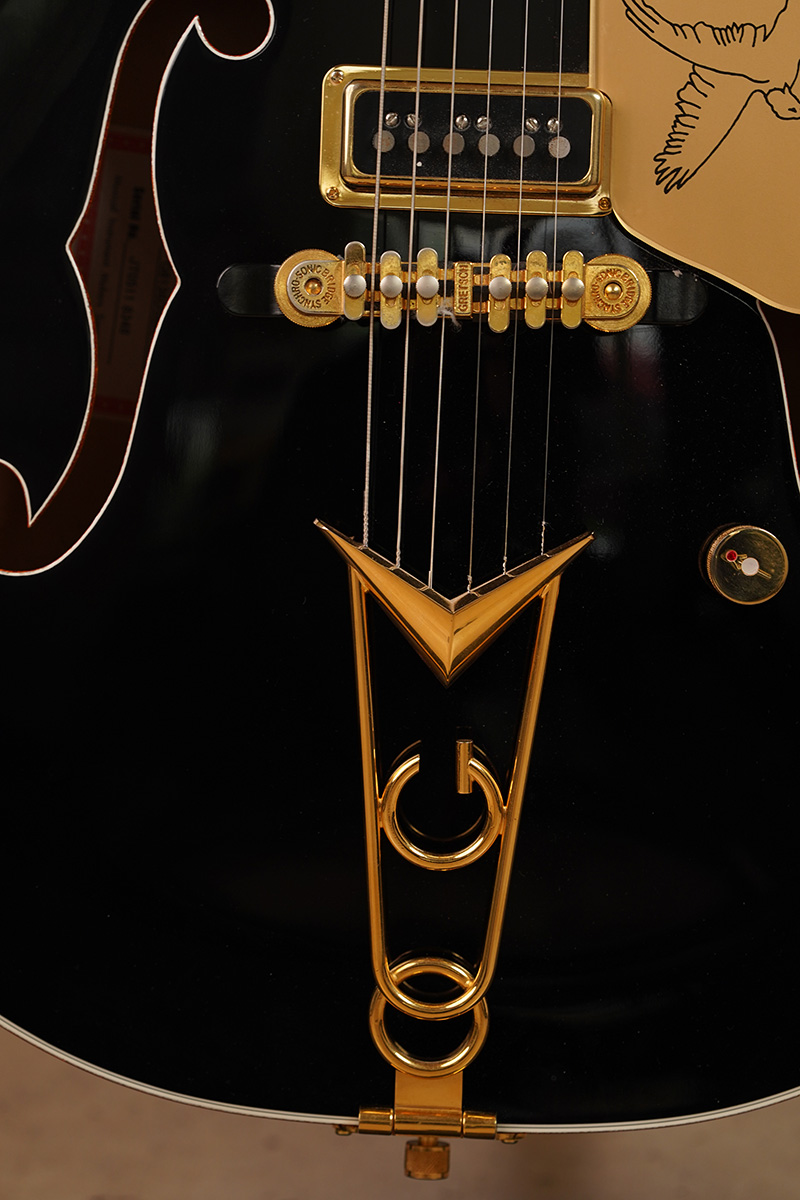Guitars sold
Gretsch Black Falcon Ex Bob Dylan Camp
Sold

Other photos
Bob Dylan
(1941)
Main guitar : Fender Stratocaster
Compulsory listening : Like A Rolling Stone
Bob Dylan is more than a legend. He’s a visionary, a revolutionary prophet that took rock music and brought it somewhere else. Before Dylan, popular music lyrics had to be simplistic and easy to understand for teenagers.
After Dylan, musicians were allowed to be deep and cryptic in their songwriting, to the point that a whole generation of poets found their salvation with the hybrid of rock and lyrical depth invented by Dylan. Dylan’s contribution is so important that he even was awarded the 2017 Nobel Prize in Literature.
All through his lengthy career, Robert Zimmerman never stopped renewing his art, going from one persona to the next depending on his inspiration. He started off as a Greenwich Village folk troubadour with a 1962 debut album deeply inspired by Woody Guthrie. Then came The Freewheelin’ in 1963, his classic folk album featuring such powerful and timeless songs as Blowin’ In The Wind, Masters Of War and A Hard Rain’s A Gonna Fall.
But Dylan was not content being the protest singer everybody wanted him to be. He didn’t want to be a flag-bearer, and so he became a surrealist poet backed by an electric rock band featuring Mike Bloomfield on the Telecaster. The classic album Highway 61 Revisited came out in 1965, followed by Blonde On Blonde in 1966, his country album recorded in Nashville with local musicians.
Dylan has had dozens of musial lives, backed by exceptional guitar players (Mick Ronson, Robbie Robertson…). Bob himself is far from being a bad musician, with a very capable right hand and a rhythmic approach that was aptly displayed on pre-war Martins, Gibson J-45s, J-200s, L-0s, Telecasters, Stratocasters, Yamahas, Duesenbergs and even James Trussarts. A full-blown chameleon.






















